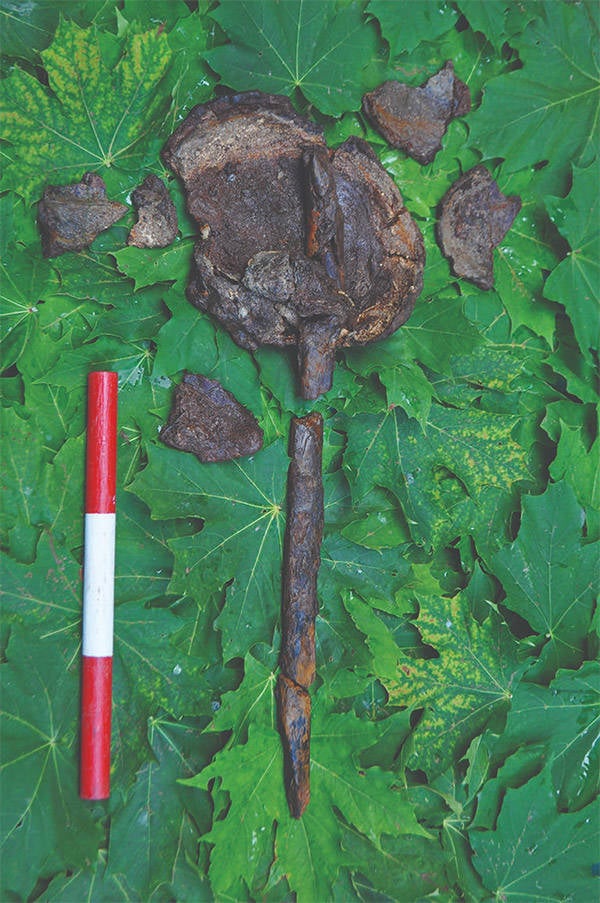Researchers found bones and skulls from 8,000 years ago in a burial ritual that they don't yet understand.

Sara Gummesson/Antiquity 2018One of the 8,000-year-old skulls found in Sweden.
A routine archeologist survey in Sweden has resulted in the discovery of 8,000-year-old bones, skulls, and questions that likely aren’t going to be answered.
Before the construction of a new railroad and bridge began, archeologists were brought in to the Kanaljorden site in eastern-central Sweden to search for any artifacts in the area. It’s safe to say they found some.
What the team discovered was a large and perplexing burial site from the Mesolithic period. The area is 39 by 46 feet in size and composed of stone and wood. Even more strange is that fact the site was built underwater, as the area was previously a lake.
Here’s what was found: 11 adult human skulls, the skeleton of an entire infant (likely a stillborn or died shortly after birth), and the bones of 14 animals from seven different species.
This massive finding launched a major excavation from 2009-2013, with the findings and research being published in Antiquity Journal.
The findings were bizarre and not just because they were from eight millenniums ago.
The first oddity was the particular arrangement of the skulls and bones. The human skeletons were in the middle of the burial site, with the bones of brown bears placed south of the humans and the bones of wild boars placed south-east of the humans.

Sara Gummesson/Fredrik Hallgren/Antiquity 2018Examples of the trauma found on the skulls.
The specific way in which the bones were placed indicates a very intricate ritual. What does the ritual mean? It’s a good question and one that nobody can answer. As this is the first of its kind case among Mesolithic humans, scientists are left with very little answers.
There are also clear indications of violence inflicted upon the dead. All the adult skulls had signs of blunt force trauma to the head, meaning a physical attack. Even weirder, the location of the head injuries differed based on sex. Female skulls were found to have injuries on the back and right of the head, while the injuries to male skulls were on the front of the head.
In another twist, indications of healing and recovery demonstrate that the head trauma wasn’t the thing that killed these stone age people. Though the fractures to the heads were clearly notable, they weren’t to be outshone.

Fredrik Hallgren/Antiquity 2018One of the two skulls found at the burial site that had a wooden stake sticking out of it.
Two of the skulls had wooden stakes through them.
Each stake adorned skull had something to show for itself. The skull with the unbroken stake measured 1.5 feet long, indicating it served as a mount for the skull. In the other skull with the broken stake, researchers found a piece of brain tissue. The fact that human brain tissue could be preserved after 8,000 years indicates the head was placed in the water shortly after death.
While the facial bones of the skulls were well preserved, none of them had jaws, except for one which was determined to be unrelated to the others.
In case that’s not gruesome enough, several of the bear bones found had markings that pointed to signs of butchering.
While scientists may not know why the burial was underwater, they can be thankful that it was. The lack of oxygen and limestone in the bedrock was a major factor in why the artifacts were able to stay so well preserved.
Still, despite how well preserved and how many artifacts there were, the nature of the discovery is still extremely perplexing to everyone.
Next read about when scientists were baffled by whales . Then learn about when the earliest known Ice Age cave art was uncovered.




